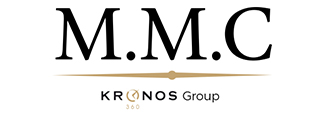Sold out
Rolex
GMT-Master réf.1675 circa 1970
-
Category :
Vintage
-
Functions :
hour, minute, central second, date, 2nd time zone
-
Mecanism :
Mechanical with automatic winding
-
Case :
40mm in steel, bezel bidirectional rotating in yellow gold, luminescent index and hands, plexiglas glass, screwed backcase, screwed crown, water resistant to 100m
-
Strap :
gold and steel, deploying buckle
-
Comment :
GMT Master The GMT Master, unveiled in 1965 was the first watch to display time of two different time zones. It became immensely popular with the Pilots who had to fly Trans Atlantic every day. In fact Pan Am ordered a watch each for its Flight crew. The watch is still a hot favourite amongst Aviators Rolex history.. In 1905 Hans Wilsdorf and his brother-in-law Alfred Davis founded "Wilsdorf and Davis" in London.[8] Their main business at the time was importing Hermann Aegler's Swiss movements to England and placing them in quality watch cases made by Dennison and others. These early wristwatches were sold to jewellers, who then put their own names on the dial. The earliest watches from Wilsdorf and Davis were usually hallmarked "W&D" inside the caseback. In 1908 Wilsdorf registered the trademark "Rolex" and opened an office in La Chaux-de-Fonds, Switzerland.[8] The company name "Rolex" was registered on 15 November 1915. The book The Best of Time: Rolex Wristwatches: An Unauthorized History by Jeffrey P. Hess and James Dowling says that the name was just made up.[9] One story, never confirmed by Wilsdorf, is that the name came from the French phrase horlogerie exquise, meaning "exquisite clockwork" [10] or as a contraction of "horological excellence". Wilsdorf was said to want his watch brand's name to be easily pronounceable in any language.[7] He also thought that the name "Rolex" was onomatopoeic, sounding like a watch being wound. It is easily pronounceable in many languages and, as all letters have the same size, allows to be written symmetrically. It was also short enough to fit on the face of a watch.[7] In 1914 Kew Observatory awarded a Rolex watch a Class A precision certificate, a distinction which was normally awarded exclusively to marine chronometers.[7] In 1919 Wilsdorf left England due to wartime taxes levied on luxury imports as well as export duties on the silver and gold used for the watch cases driving costs too high[10] and moved the company to Geneva, Switzerland where it was established as the Rolex Watch Company. Its name was later changed to Montres Rolex, SA and finally Rolex, SA.[8] Upon the death of his wife in 1944, Wilsdorf established the Hans Wilsdorf Foundation in which he left all of his Rolex shares, making sure that some of the company's income would go to charity. The company is still owned by a private trust and shares are not traded on any stock exchange.[10] In December 2008 the abrupt departure of Chief Executive Patrick Heiniger, for �personal reasons�, was followed by a denial by the company that it had lost 1 billion Swiss francs (approx £574 million, $900 million) invested with Bernard Madoff, the American asset manager who pleaded guilty to an approximately £30 billion worldwide Ponzi scheme fraud.( http://en.wikipedia.org/wiki/Rolex)

